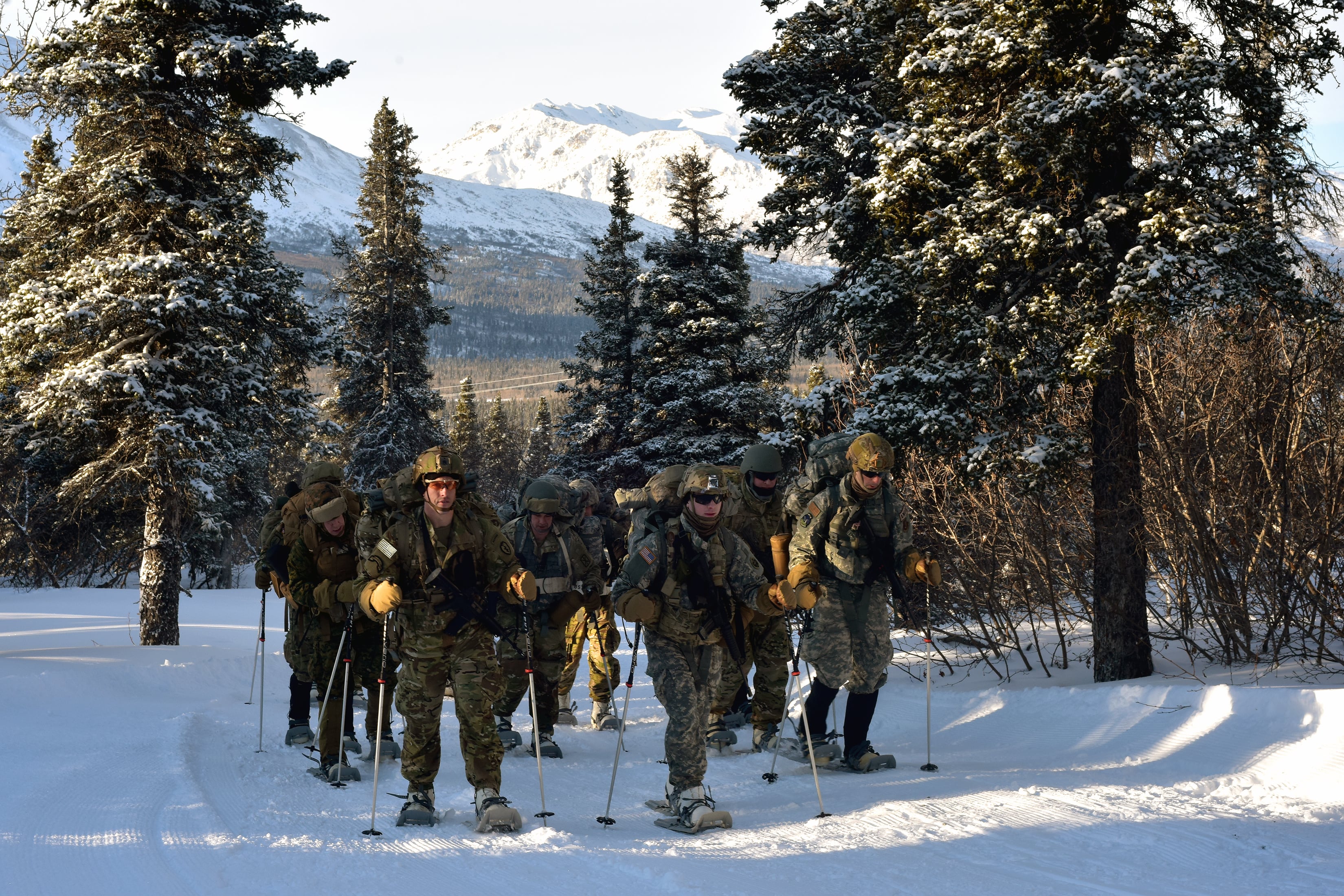The Army upgraded the design of its Arctic Tab and issued new guidance for wearing the accoutrement as the Defense Department increasingly looks to bolster its cold-weather warfare capabilities.
While the move may seem small, it comes during a time of increased competition for resources in the Arctic region with Russian, and even China. As sea ice increasingly recedes, new economic opportunities emerge, but so does competition.
The Arctic Tab was originally worn below a soldier’s unit patch and could only be worn while assigned to Army Alaska, a subordinate command to Army Pacific and the ground force defending much of the U.S. territorial claims near the Arctic region.
Now, the redesigned tab is worn above the unit patch like the Ranger and Sapper tabs. It can also be worn by those serving at all Army Pacific installations throughout that command’s area of operations.
“I think what makes U.S. Army Alaska and our units unique is that we are the Army’s proponent for cold weather training,” said the Alaska-based commander, Maj. Gen. Peter B. Andrysiak Jr., in a press release this week. “We not only live here; we thrive here, and I want to make sure the tab properly recognizes our unique expertise.”
The Arctic tab is earned by completing either the Cold Weather Leaders Course or the Cold Weather Orientation Course at the Northern Warfare Training Center located in Black Rapids, Alaska.
RELATED

The first class to wear the tab graduated from the Cold Weather Leaders Course on Jan. 17, 2020. The old tab was also rectangular-shaped, while the new one has the “rainbow arc of similar tabs,” according to the Army Alaska release.
However, the tab is not authorized for soldiers on temporary duty or deployment status outside the Pacific theater. Still, the release stated that the new tab reflects the growing importance of fighting in the arctic for Army personnel.
Courses in Black Rapids teach troops cold weather and mountain warfare, which includes skiing, snowshoeing and survival skills. These courses also teach students to understand new problems, like how the harsh Arctic conditions sap battery life and limit the capabilities of autonomous vehicles that the military has grown to rely on over the past two decades.

“Soldiers operate and move differently when it is minus 25 out, and our equipment does as well," said Capt. Robin Furrer, a recent graduate of the 15-day Cold Weather Leaders Course at Black Rapids. "So it is important for us to have the knowledge to plan, make decisions, and adapt to these conditions.”
That course is designed for squad and platoon leaders to hone their skills in small-unit Arctic operations. The Cold Weather Orientation Course, meanwhile, is a four-day school for commanders and staff officers to practice planning and conducting missions in the environment.
“From jumping into minus 100, bitter, cold, exiting the aircraft over Prudhoe Bay, to conducting live-fire exercises at minus 30 in the Donnelly Training Area, the Northern Warfare Training Center’s team of professionals ensure our soldiers are ready,” said Command Sgt. Maj. Jeffrey Dillingham, Army Alaska’s senior enlisted leader.
“We are the first line of defense in the West and the last line of defense in the Pacific," he added.
Kyle Rempfer was an editor and reporter who has covered combat operations, criminal cases, foreign military assistance and training accidents. Before entering journalism, Kyle served in U.S. Air Force Special Tactics and deployed in 2014 to Paktika Province, Afghanistan, and Baghdad, Iraq.
